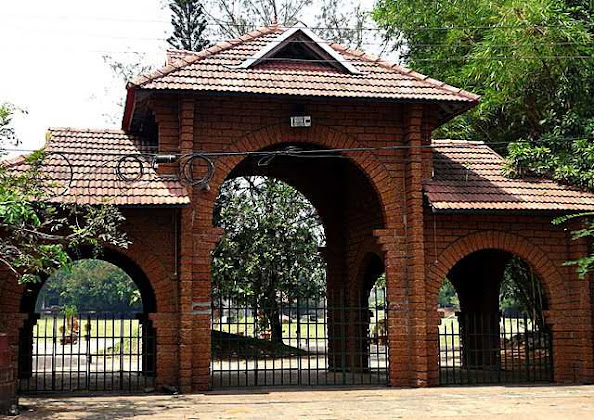Heart of Kozhikode: The Mananchira Square
Anyone
who comes to Kozhikode can never miss this iconic spot. Today this place is the
center of Kozhikode & has been since the 19th century. The pond was built in the 14th century by the ruler Mana Vikraman & so the name MananChira (Pond built by Mana). The pond was not built for storage of water, there was a need to build a palace & laterite stones were needed. So to get laterite, the excavation was done at the site. When the excavation was complete, a natural spring of water was found & it started to fill the area. It was thus used as a bathing pond for the feudal lords. It was the decision of Tipu who conquered Kozhikode to convert the bathing pond into a drinking water source. Thus the pond stays & the natural spring still produces water for us to see & use.
The pond is today surrounded by a beautiful park which is frequented by all to enjoy walks or relax in the lawn. Earlier the place was called Mananchira Maidan as it was a playground, now it is the Mananchira Square. During the British rule over the Madras Presidency, Mananchira Maidan was a popular place among the elites. The presence of government offices & British quarters made it the most important landscape in Kozhikode. The Maidan was also the place where the British & elite locals played Cricket & other sports. In the early years of the 20th century, circuses became a way of life for people & Malabar was the budding place for Circus entertainers & groups. The Mananchira Maidan was used by circus groups to showcase their art. The British also were quite happy to allow these events as it brought people & taxes for them. But over the years the amount of circus tents went up & this resulted in many questioning the need to give the maidan for circus activities. The primary objection was the presence of animals in the maidans which were kept in unhygienic conditions. The Municipal hospital doctors complained of bacteria & flies affecting the patients around, the animals' sound at night creating problems for people living around in the quarters. The rush of locals & people from all over to see the circus was also a nightmare for the British. The authorities had to decide whether to allow the circus & by 1908 it was getting difficult for all to continue. The Mananchira pond was the only source of drinking water & the allegations of this being polluted finally resulted in the Collector ordering no Circus events at the maidan. This decision was welcomed by all & in 1910 the collector ordered no circuses to be allowed at the maidan or anywhere near the vicinity of the pond.
After independence, the maidan continued to function as a park which was open for all. The poor & destitutes who roamed around the city found a place to sleep in the park. The maidan was used by everyone to play football & several tournaments were held here. The presence of such a large maidan also fueled the necessity to have public & religious events. But the local government understood the need to not allow such functions at the park & opened it only for cultural activities. For a long time people in Kozhikode wanted the Mananchira maidan preserved as a heritage & its upkeep was necessary. This was finally possible when Amitabh Kant became the collector of Kozhikode. He initiated the beautification of the area & started by renaming the maidan as Mananchira Square. The Ayappa Vilakku which was a large event happened at the park & he decided to shift this to Muthalakulam maidan which was another pond next to the maidan. The pond was cleared & converted into a maidan to allow events to happen of any kind which is still followed.
Today the Mananchira square is surrounded by structural walls & landscaped with trees. The square entrance greets visitors with canons of Tipu & a well lit walking strip around the pond gives visitors an opportunity to sit & relax. The entry is free & new additions are made to the square & park to improve facilities.




Comments
Post a Comment